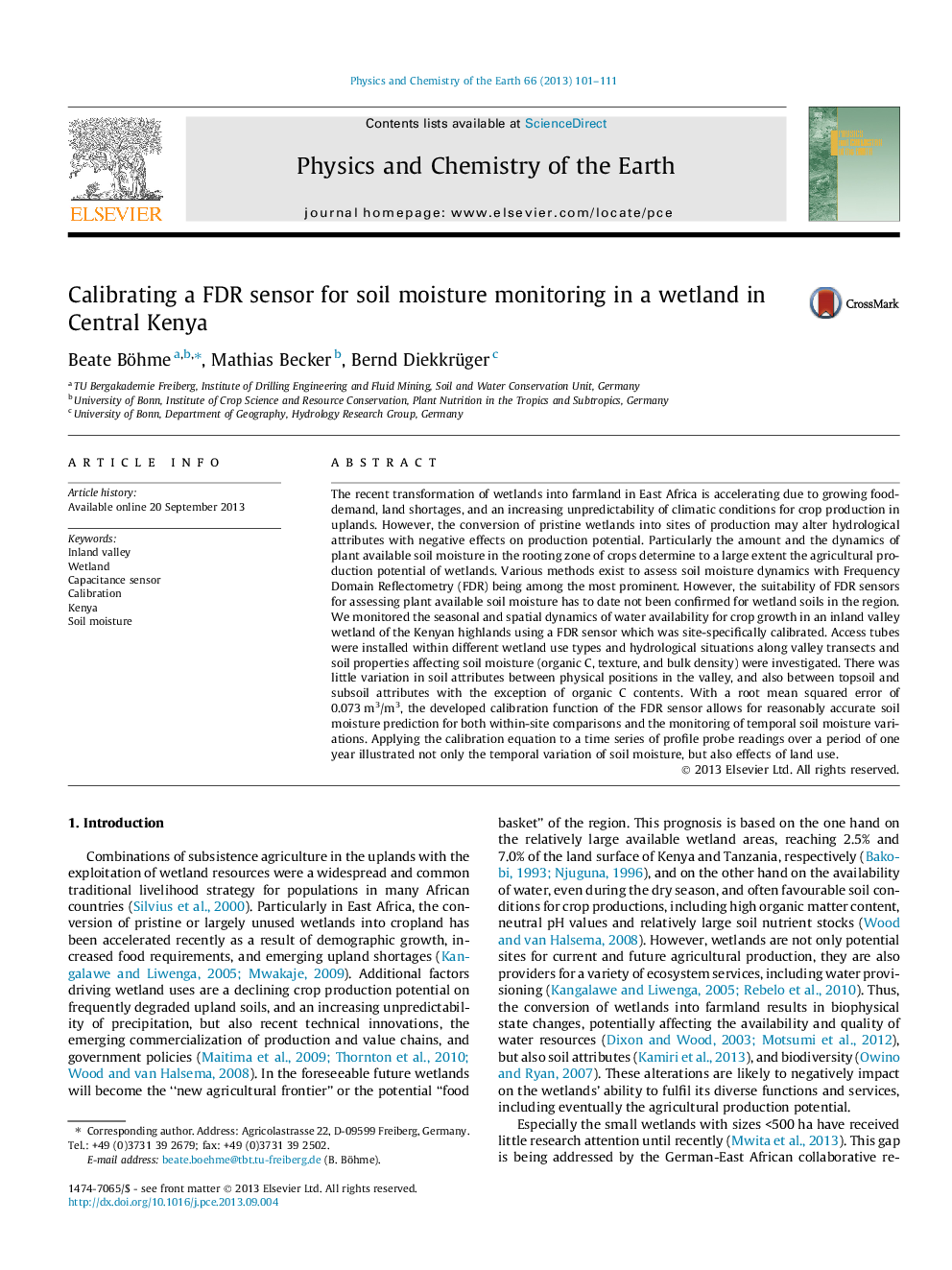| Article ID | Journal | Published Year | Pages | File Type |
|---|---|---|---|---|
| 4721031 | Physics and Chemistry of the Earth, Parts A/B/C | 2013 | 11 Pages |
•Recent transformation of small wetlands into farmland in East Africa is accelerating.•FDR systems are applicable for monitoring soil moisture contents in wetland soils.•Errors of 0.07 m3/m3 must be accepted for FDR measurements, even with site specific calibration.•Dynamic of soil water availability reflects land-use.•Results enable within-site comparability of soil moisture status and temporal variation.
The recent transformation of wetlands into farmland in East Africa is accelerating due to growing food-demand, land shortages, and an increasing unpredictability of climatic conditions for crop production in uplands. However, the conversion of pristine wetlands into sites of production may alter hydrological attributes with negative effects on production potential. Particularly the amount and the dynamics of plant available soil moisture in the rooting zone of crops determine to a large extent the agricultural production potential of wetlands. Various methods exist to assess soil moisture dynamics with Frequency Domain Reflectometry (FDR) being among the most prominent. However, the suitability of FDR sensors for assessing plant available soil moisture has to date not been confirmed for wetland soils in the region. We monitored the seasonal and spatial dynamics of water availability for crop growth in an inland valley wetland of the Kenyan highlands using a FDR sensor which was site-specifically calibrated. Access tubes were installed within different wetland use types and hydrological situations along valley transects and soil properties affecting soil moisture (organic C, texture, and bulk density) were investigated. There was little variation in soil attributes between physical positions in the valley, and also between topsoil and subsoil attributes with the exception of organic C contents. With a root mean squared error of 0.073 m3/m3, the developed calibration function of the FDR sensor allows for reasonably accurate soil moisture prediction for both within-site comparisons and the monitoring of temporal soil moisture variations. Applying the calibration equation to a time series of profile probe readings over a period of one year illustrated not only the temporal variation of soil moisture, but also effects of land use.
